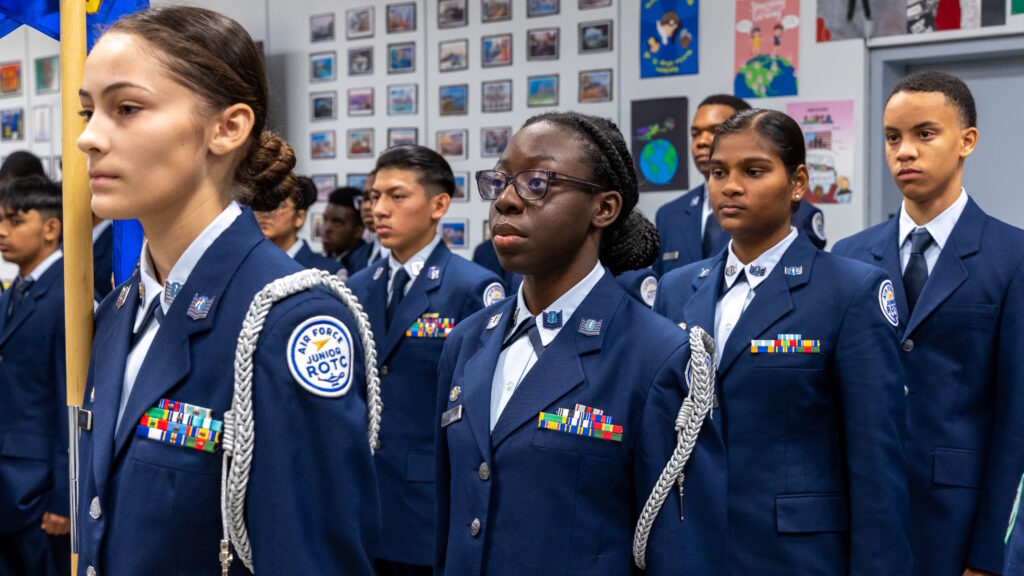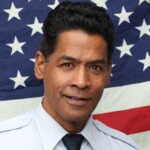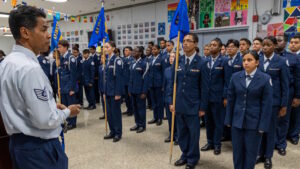 About JROTC
About JROTC
AFJROTC program is a citizenship training program that is designed to educate and train high school cadets in citizenship, promote community service, instill personal responsibility, character, and self-discipline. Our goals are to develop our character and be dedicated to serving our nation and community. Instill values of citizenship, service to the United States, personal responsibility and sense of accomplishment.
Personnel and Resources
The Air Force Junior Reserve Officer Training Corps staff includes 31 headquarters personnel and more than 1,900 retired Air Force officer and enlisted military instructors. There are over 880 Air Force Junior ROTC units with more than 120,000 cadets in high schools across the United States and selected Department of Defense Dependent Schools in Europe, the Pacific, Puerto Rico and Guam. The Air Force plans to continue expansion efforts to no fewer than 955 units by 2020 when funds are available. With the addition of new units, AFJROTC is expected to reach more than 130,000 cadets worldwide.
Organization
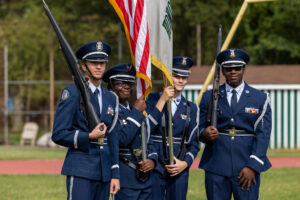 Air Force JROTC provides citizenship training and an aerospace science program for high school students. Secondary school students who enroll in the AFJROTC program are offered a wide variety of curricular and co-curricular activities. The program explores the historic and scientific aspects of aerospace technology and teaches high school students self-reliance, self-discipline and other leadership characteristics. Science, technology, engineering and mathematics (STEM) concepts are also an important part of this world-class program. The AFJROTC program is open to 9th-12th grade students. This program is not chartered as a recruiting program for the military services and those students who participate in AFJROTC DO NOT incur any obligation to the Air Force.
Air Force JROTC provides citizenship training and an aerospace science program for high school students. Secondary school students who enroll in the AFJROTC program are offered a wide variety of curricular and co-curricular activities. The program explores the historic and scientific aspects of aerospace technology and teaches high school students self-reliance, self-discipline and other leadership characteristics. Science, technology, engineering and mathematics (STEM) concepts are also an important part of this world-class program. The AFJROTC program is open to 9th-12th grade students. This program is not chartered as a recruiting program for the military services and those students who participate in AFJROTC DO NOT incur any obligation to the Air Force.
Air Force JROTC objectives are to educate and train high school cadets in citizenship and life skills; promote community service; instill a sense responsibility; develop character, leadership, and self-discipline through education; and instruction in air and space fundamentals and the Air Force’s core values of integrity first, service before self and excellence in all we do.
Curriculum
 Aerospace science comprises 40 percent of the curriculum; leadership education, 40 percent; and health and wellness for life training, 20 percent. Classroom study includes the heritage of flight, principles of aircraft flight and navigation, human requirements of flight, development of aerospace power, aerospace vehicles, rocketry, space and technology programs, and the aerospace industry. Students are also introduced to military customs and courtesies, citizenship in the United States, first aid, wellness, health and fitness, basic drill and ceremonies, effective communications, management, human relations and life after high school. All uniforms and curriculum materials are provided by the Air Force.
Aerospace science comprises 40 percent of the curriculum; leadership education, 40 percent; and health and wellness for life training, 20 percent. Classroom study includes the heritage of flight, principles of aircraft flight and navigation, human requirements of flight, development of aerospace power, aerospace vehicles, rocketry, space and technology programs, and the aerospace industry. Students are also introduced to military customs and courtesies, citizenship in the United States, first aid, wellness, health and fitness, basic drill and ceremonies, effective communications, management, human relations and life after high school. All uniforms and curriculum materials are provided by the Air Force.
To reinforce what is learned in the classroom, cadets participate in outside the classroom co-curricular activities such as field trips to military bases, aerospace facilities and industries, museums, civilian airports and other areas related to aerospace education. Cadets also participate in parades, leadership activities, drill team competitions, color guards, military balls and honorary academic groups.
Instructors
All AFJROTC instructors are retired Air Force commissioned and non-commissioned officers. The instructors maintain Air Force standards and are trained through the AFJROTC Junior Instructor Certification Course. They are full-time faculty members of the participating high school and are employed by the local school board to teach AFJROTC classes. There are more than 1,900 instructors serving in over 880 units around the world.
Community Service
Community service is a major part of the cadet experience and helps instill a sense of civic pride and citizenship. Each year the cadets of AFJROTC do over 1.6 million hours of community service. Projects range from working with local Soup kitchens, nursing homes and early childhood daycare centers.
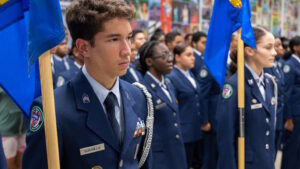
Drug Abuse/Bullying Prevention
Cadets are also very active in drug abuse and bullying prevention education. The Awareness Presentation Team is a program designed to provide cadets as positive role models for elementary and middle school students. Cadets visit the younger students at their schools and present talks and skits in an effort to deter drug use/abuse and bullying. Active unit programs make presentations to thousands of students each year.
Benefits
AFJROTC cadets who choose to continue their education may receive special consideration for Air Force Reserve Officer Training Corps. Also, Cadets electing to enter the military immediately after graduating from high school are eligible to enlist in the services at one to two pay grades higher than other enlistees. Students completing three years in AFJROTC are eligible to enter the Air Force two pay grades higher than other enlistees, and are automatically enrolled into the Community College of the Air Force, to receive college credit toward their associate college degree.
